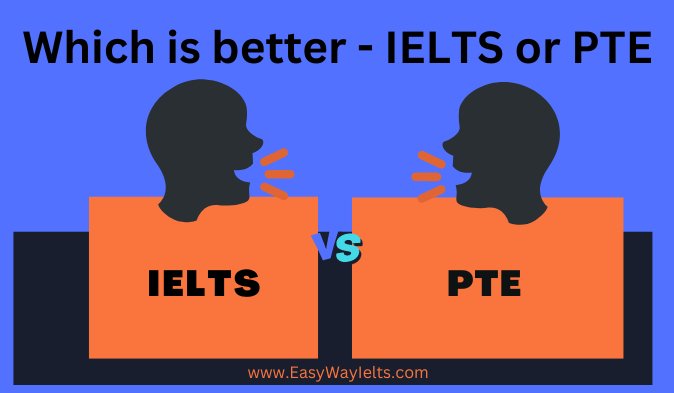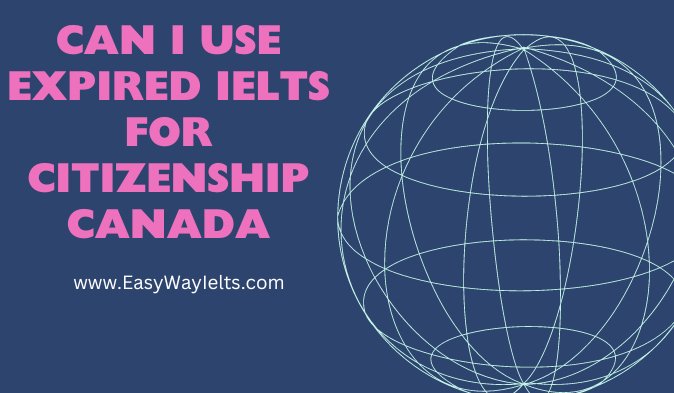IELTS or PTE – In the realm of language proficiency tests, two names often stand out: IELTS and PTE.
For those aspiring to study or work in English-speaking countries, deciding between these assessments is pivotal.
Whether aiming for a university admission, immigration process, or professional certification, the choice between the International English Language Testing System (IELTS) and the Pearson Test of English (PTE) is a significant one.
Understanding the nuances, formats, and comparative advantages of each test is crucial in making an informed decision.
So, let’s delve into the intricacies of IELTS and PTE, unraveling their differences to help you chart your path towards success.
Test Format and Structure: IELTS vs. PTE
The choice between IELTS and PTE Academic often boils down to personal preferences, familiarity with the test format, and the specific requirements of the institution or organization you are applying to.
Understanding these differences in Test Format and Structure helps test takers make an informed decision based on their strengths and test-taking style.
IELTS (International English Language Testing System)
- Modules
IELTS consists of two versions: Academic and General Training.
- Academic Module – Designed for those applying for higher education or professional registration.
- General Training Module – Typically for those seeking work experience, training programs, or immigration purposes.
- Sections
- Listening (30 minutes) – Four recordings, monologues, and conversations with varying accents. Questions get progressively more challenging.
- Reading (60 minutes) – Three long texts with questions that test a range of reading skills, such as multiple choice, matching headings, and True/False/Not Given.
- Writing (60 minutes) – Two tasks – Task 1 (150 words) involves describing data, graph, chart, or table; Task 2 (250 words) is an essay on a given topic.
- Speaking (11-14 minutes) – Face-to-face interview with an examiner, covering personal questions, a short talk, and a discussion.
- Paper-Based vs. Computer-Based
IELTS offers both paper-based and computer-based formats in some locations.
- Paper-Based – Writing and Reading sections are on paper.
- Computer-Based – Writing and Reading sections are on a computer, while Listening and Speaking remain the same.
- Timing
- The total test time is 2 hours and 45 minutes for both Academic and General Training.
- Scoring
- Scores are reported on a scale from 0 to 9 for each section.
- Overall Band Score is the average of the four section scores, rounded to the nearest whole or half band.
PTE (Pearson Test of English)
- Single Format
- PTE Academic has one format, suitable for all test takers, regardless of the reason for taking the test.
- Sections
- Speaking & Writing (77-93 minutes) – Combined section, including speaking and writing together. It involves summarizing written text, writing an essay, and speaking into a microphone.
- Reading (32-40 minutes) – Multiple-choice, choose single answer, choose multiple answers, re-order paragraphs, and fill in the blanks.
- Listening (45-57 minutes) – Summarize spoken text, multiple choice questions, fill in the blanks, highlight correct summary, and select missing word.
- Computer-Based Only
- PTE Academic is entirely computer-based, using advanced AI technology for assessment.
- Timing
- The total test time for PTE Academic is approximately 3 hours, but this varies slightly depending on the combination of questions in the test.
- Scoring
- PTE Academic provides scores on a scale from 10 to 90, with 10-point increments for each of the four skills (Speaking, Writing, Reading, Listening).
- It also provides an overall score, the PTE Academic Score, which reflects overall English language ability.
Comparison: IELTS vs. PTE
- Format Flexibility
- IELTS offers both paper-based and computer-based formats, catering to different preferences.
- PTE Academic is solely computer-based, providing a consistent experience for all test takers.
- Section Integration
- PTE integrates the Speaking and Writing sections, requiring test takers to switch between speaking into a microphone and typing responses.
- IELTS keeps these sections separate, with a face-to-face interview for Speaking and traditional written tasks for Writing.
- Test Duration
- IELTS is slightly shorter in total duration, around 2 hours and 45 minutes, compared to PTE Academic, which is approximately 3 hours.
- Test Content
- While both tests assess similar language skills (Listening, Reading, Writing, Speaking), the question types and formats vary.
- IELTS often includes more traditional question types, such as essays and long-form reading passages.
- PTE Academic includes innovative item types like summarizing spoken text, highlighting correct summary, and re-order paragraphs.
- Scoring System
- IELTS uses a Band Score system from 0 to 9, with specific descriptors for each band.
- PTE Academic provides a broader range of scores from 10 to 90, allowing for more granularity in performance assessment.
Availability, Test Centers, Cost Comparison and Value
This comparison provides a comprehensive overview of how IELTS and PTE differ in terms of availability, test centers, cost, and the value their scores hold for candidates aiming to study, work, or immigrate to English-speaking countries. You may also know how to prepare for IELTS as Non-Native Speaker.
IELTS (International English Language Testing System)
Availability
- IELTS is widely available worldwide, with test dates offered frequently throughout the year.
- Test takers can usually find multiple test dates each month, providing flexibility in scheduling.
Test Centers
- IELTS has a vast network of test centers globally, spanning over 1,600 locations in more than 140 countries.
- These centers are often located in major cities and educational hubs, making them accessible to a wide range of test takers.
Cost
- The cost of the IELTS exam varies by country and location but generally ranges from $215 to $250 USD.
- This fee includes the registration fee for both the Academic and General Training modules.
Value
- IELTS scores are widely recognized and accepted by thousands of institutions worldwide, including universities, employers, immigration authorities, and professional bodies.
- Its long-standing reputation and global recognition make it a trusted choice for many candidates.
PTE (Pearson Test of English)
Availability
- PTE Academic is also widely available, with test centers in numerous countries.
- Test dates are typically offered throughout the year, allowing candidates to choose from various options.
Test Centers
- PTE Academic boasts a substantial network of test centers worldwide, with over 350 locations in more than 50 countries.
- Similar to IELTS, PTE test centers are often situated in major cities and educational centers for convenience.
Cost
- The cost of the PTE Academic exam is also variable, typically ranging from $150 to $250 USD, depending on the country.
- This fee covers the cost of the test and sending scores to multiple institutions.
Value
- PTE Academic scores are also widely accepted by universities, colleges, governments, and employers around the world.
- The test’s computer-based format and quick score turnaround time (typically within 5 business days) offer added convenience for test takers.
Comparison Between IELTS and PTE
- Availability and Test Centers
- Both IELTS and PTE Academic have extensive networks of test centers globally, providing candidates with ample options for test locations.
- Test takers can typically find centers in major cities and educational hubs, ensuring accessibility.
- Cost Comparison
- The cost of the IELTS exam tends to be slightly higher on average compared to the PTE Academic exam.
- However, the exact cost can vary significantly based on the country and specific test center.
- Value and Recognition
- Both IELTS and PTE Academic scores hold significant value and recognition worldwide.
- They are accepted by thousands of institutions, employers, and governments for various purposes such as education, immigration, and employment.
- Convenience and Accessibility
- PTE Academic offers a quicker score turnaround time, typically within 5 business days, compared to IELTS, which usually takes around 13 days.
- The availability of multiple test dates and online registration for both exams adds to the convenience for test takers.
- Cost-effectiveness
- While IELTS may have a slightly higher upfront cost, it is essential to consider the overall value and recognition of the scores for your specific goals.
- PTE Academic’s lower cost in some regions can be advantageous for those seeking an economical option without compromising on the test’s quality and recognition.
Conclusion – Which is Better: IELTS or PTE?
In the journey towards achieving English language proficiency for academic, professional, or immigration purposes, the choice between IELTS and PTE is a significant one.
Throughout this exploration of their differences, it becomes evident that both exams have their unique features, advantages, and recognition on a global scale.
Considerations such as test format, structure, availability, test centers, cost, and value are pivotal in making an informed decision.
For IELTS:
- Established Reputation – With its longstanding history and recognition, IELTS remains a trusted choice for many candidates.
- Flexible Options – Offering both paper-based and computer-based formats, IELTS provides candidates with flexibility in choosing their preferred mode of testing.
- Global Recognition – Scores from IELTS are widely accepted by thousands of institutions worldwide, including universities, employers, immigration authorities, and professional bodies.
For PTE:
- Modern Technology – PTE Academic’s computer-based format, advanced AI assessment, and quick score turnaround time offer a contemporary testing experience.
- Cost Efficiency – With a slightly lower cost in some regions, PTE Academic can be a more economical option without compromising on quality or recognition.
- Global Acceptance – Scores from PTE Academic are also widely recognized and accepted by universities, colleges, governments, and employers globally.
Ultimately, the choice between IELTS and PTE will depend on individual preferences, goals, and circumstances:
- For those seeking a traditional test format with face-to-face speaking and writing tasks, IELTS may be the preferred choice.
- For candidates comfortable with computer-based assessments, innovative question types, and a quicker score delivery, PTE Academic could be the ideal fit.
Remember, both IELTS and PTE Academic serve as valuable tools to help individuals achieve their aspirations of studying, working, or immigrating to English-speaking countries.
So, as you embark on this language proficiency journey, armed with knowledge about the differences between IELTS and PTE, may you choose the path that aligns best with your goals, preferences, and aspirations.
Whichever test you opt for, may it propel you towards success, opening doors to new opportunities and experiences in the global landscape of English language proficiency.
Frequently Asked Questions (FAQs)
- Is PTE easy to pass?
The difficulty of passing PTE varies for each individual, depending on their English language skills and preparation. Some find PTE to be straightforward due to its computer-based format, while others may find certain sections challenging.
- Which is better IELTS or PTE for PR?
Both IELTS and PTE are widely accepted for Permanent Residency (PR) applications in various countries. The choice between the two often depends on the specific requirements of the country or immigration program.
- Is PTE useful or not?
PTE is highly useful for those seeking to demonstrate their English proficiency for academic, professional, or immigration purposes. Its computer-based format, quick score delivery, and global recognition make it a valuable option for many test takers.
- Why do people choose PTE?
People often choose PTE for its modern, computer-based format, which includes innovative question types and a quicker score turnaround time. Additionally, PTE’s global recognition and acceptance by universities, employers, and immigration authorities make it an appealing choice for many.
Here you may check the score chart of Ielts and PTE.



